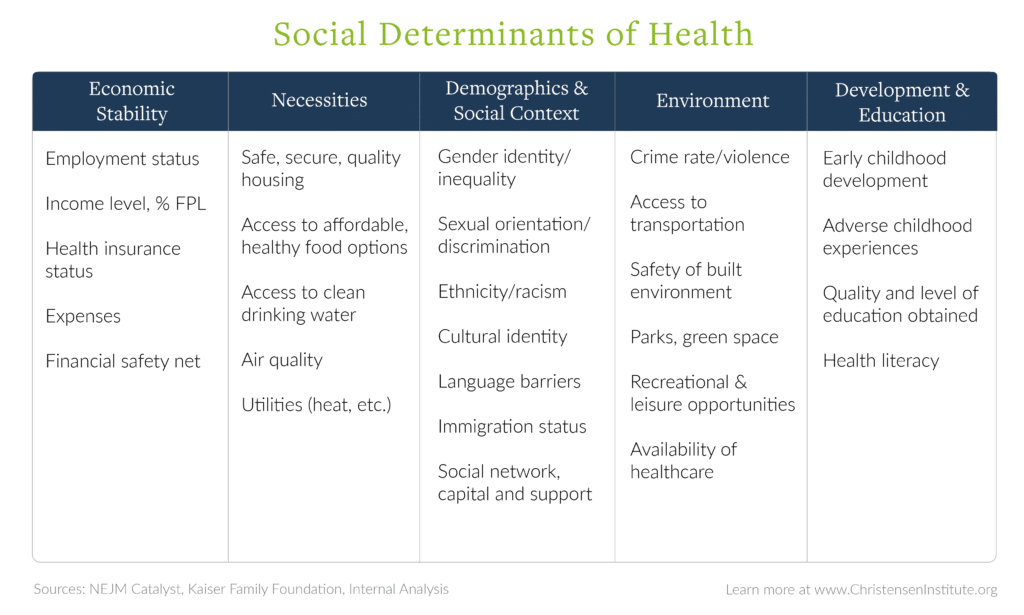Innovation in healthcare delivery has historically focused on improving medical care. However, social/environmental factors—also known as social determinants of health—are estimated to have at least twice the impact on risk of premature death than medical care does. But what exactly are the social determinants of health? Here, we break them down and explain how they interact with each other.
Social determinants of health are the conditions in which people are born, grow, live, work and age, and they play a large role in determining health status and disparities. They include such factors as environment, access to healthy food and clean water, and availability of safe and secure housing. They also include language and culture, which impact communication between patients and providers. Lastly, socioeconomic status is a social determinant of health, as it impacts ability to afford health insurance, and addresses other important, health-related social needs.
It’s important to understand that social determinants of health do not act in isolation, but rather interact with each other in complex ways. For instance, good health demands proper nutrition, which in turn depends on a person’s access to healthy food—an important social determinant of health. But such access depends on at least two others determinants: environment and socioeconomic status.
Specifically, to gain access to healthy food, a person must live near stores that regularly stock sufficient supplies of healthy food. Further, one must have adequate income to afford transportation to the stores, and pay for the groceries. But income, and by extension socioeconomic status, depends in part on the ability to work, which depends on health and therefore access to healthy food. Thus, significant, unmet needs related to any one social determinant of health can drastically affect a person’s ability to fulfill needs related to others, and trap that person in a vicious, health-detracting cycle.
Fortunately, healthcare providers are increasingly expanding beyond traditional medical care and seeking to positively influence the social determinants of their patients’ health. For information on how innovation can help providers do that, see Health for hire: Unleashing patient potential to reduce chronic disease costs.



